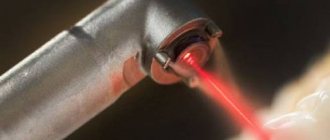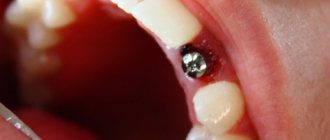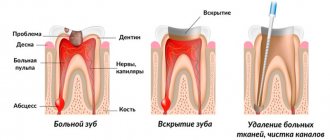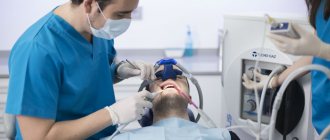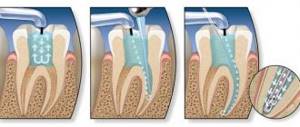Nowadays, dental implantation and related bone tissue augmentation operations, including sinus lifting, have become routine, widely used procedures. The methods and techniques of these surgical dental interventions have been carefully developed, the vast accumulated clinical experience has proven their effectiveness, but in medicine there are no absolute methods, there are no methods without complications, and sinus lifting is no exception.
It must be admitted that the complications of sinus lifting are little discussed, especially against the backdrop of countless widely circulated positive publications. In particular, there is little analytical work on rhinological complications, although it is known that sinus lifting causes reactive changes in the maxillary sinus, the outcome of which depends on its functional state [1]. It is also known that such treatment can be accompanied by ruptures of the mucous membrane of the maxillary sinus, the introduction of plastic material and implants into it, the nasal cavity, etc. [2-4].
Insufficient discussion of these complications is not due to the fact that they are rare or insignificant, but largely because patients seek or are referred for help to different specialists - maxillofacial surgeons, otolaryngologists, dental surgeons, and therefore, to analyze the frequency of these complications, their causes and consequences are quite complex.
The purpose of the study is to analyze the frequency, causes and types of rhinological complications of sinus lift.
Swelling after sinus lift
Based on reviews from patients who underwent sinus lift, swelling is the most common complication. It occurs in almost everyone, and there is nothing strange about it, because soft and hard tissues are damaged during the operation. Swelling after sinus lift may be more or less pronounced, sometimes even has a slightly cyanotic or reddish tint and extends to the infraorbital region.
Swelling after a sinus lift normally persists for no more than 1-3 days, after which there should be a tendency for it to regress. A sinus lift, after which swelling persists for 2 weeks or more, was performed incorrectly. In this case, you should not relieve the swelling on your own, but should immediately consult a doctor.
What dangers do you have to deal with?
Many patients are afraid of surgery because they believe that the maxillary sinus may be damaged. If you end up in the hands of a good doctor, there is no need to be afraid of this. This should not be an ordinary implantologist, but an oral and maxillofacial surgeon. Modern sinus lifting has nothing in common with the outdated techniques previously practiced in surgery. The risk of complications is minimized here. Modern operation:
- Painless;
- Carried out using ultrasound;
- Requires only local anesthesia;
- Does not require general anesthesia.
- Sometimes the procedure takes no more than 15 minutes.
How to relieve swelling after a sinus lift
Sometimes situations arise when you need to relieve swelling after a sinus lift immediately - important meetings, photo or film shooting, and other events. For this purpose, special decongestant drugs are used in various forms - ointments, gels, tablets, injection solutions. Based on patient reviews, dexamethasone injection will help to urgently relieve swelling after sinus lift. Antiallergic drugs, anti-inflammatory drugs, and ointments such as Troxivazin, Ketonal, Lyoton-gel also have a good effect. But before you relieve swelling with one drug or another, you need to consult a doctor.
Why does my nose bleed after a sinus lift?
Considering the reviews of patients who have had a sinus lift, nosebleeds in the postoperative period are also a common complication. A slight discharge of blood or ichor from the nose or mouth in the first hours or days after surgery is quite acceptable. Blood from the nose after a sinus lift is released due to trauma to the blood vessels, which is inevitable during such an operation.
Nosebleeds after a sinus lift can be stopped by applying a cold compress, or using special medications if recommended by a doctor. The sinus lift, after which the nosebleeds do not stop for three days, was performed incorrectly. In this case, you should immediately consult a doctor.
How to treat?
If nothing serious was found in the images, sinusitis can be overcome conservatively, that is, with the help of medications and a number of physical procedures. Treatment must begin immediately, otherwise the implant may be rejected due to the inflammatory process.
If during diagnostic procedures damage to the maxillary sinuses was discovered, doctors will have to perform surgery. It looks like this:
- Administration of an anesthetic.
- Creating access to the damaged sinus.
- Drain accumulated liquid out.
- If necessary, the artificial structure is removed.
- Antiseptic treatment is carried out.
- Stitching.
In the future, the situation is resolved with the help of medications. A course of antibiotics is indicated, preferably in the form of injections. The course must last at least 14 days. Nasal drops are also prescribed to create free breathing.
Pain after sinus lift, patient reviews
Is there always pain after a sinus lift? Reviews from patients often mention this unpleasant symptom. Pain after a sinus lift is a completely natural phenomenon, since during the operation not only soft tissue is damaged, but also bone tissue. However, pain is considered normal in the first hours, maximum 24 hours, after surgery.
Based on patient reviews, pain after sinus lift is most pronounced 1-2 hours after the end of the operation - just when the anesthetic wears off. In some reviews, there are cases of pain persisting for three to four days after surgery.
How to reduce pain after sinus lift? Patient reviews may contain information about the use of anti-inflammatory and pain-relieving medications. However, before resorting to their use, you should consult your doctor.
Dear friends, today I will probably continue the topic of sinus lifting.
But before we begin, I suggest you familiarize yourself with this:
– Simple sinus lift. Part I
– Simple sinus lift. Part II
– Simple sinus lift. Part III
– Sinus lifting: what to do if there is perforation of the mucous membrane of the maxillary sinus.
The last article, oddly enough, is directly related to our conversation today about complications after sinus lift surgery. And indeed, the greatest number of problems after this simple, in general, surgical intervention are associated precisely with damage to the so-called. “Schneiderian membrane” - the mucous membrane of the maxillary sinus.
As in the photo above - due to a number of interventions and the pre-existing oroantral anastomosis, we can say that there is almost nothing left of the mucous membrane of the maxillary sinus. Is there any way we can finish this job? Easily:
Let's talk about complications. More precisely, how to avoid them. And what to do if they do happen.
Prevention.
Theoretically, in our clinic we can perform any surgical operation. Appendectomy or craniotomy, for example.
We can install implants, and not only dental ones - fortunately, we have a separate operating room and everything necessary for such surgery. So why don't we do all this? There is a problem - we will carry out the operation, but how it will end, whether the patient will wake up after our intervention is a big, big question.
It’s not for nothing that they say that the best operation is the one that is abandoned because it is unnecessary. Surgery in general, and surgical planning in particular, should be considered primarily from a risk reduction perspective—and in this regard, surgery is not the best way to show off. Because the more “impressive” an intervention is, the more risks it carries.
Professor Fyodor Grigorievich Uglov, in his famous book “The Surgeon’s Heart,” cites the story of another, no less famous doctor, Vladimir Oppel. The latter impressed with his ability to accurately make incisions - during abdominal operations, he cut through the skin, subcutis, aponeurosis and peritoneum with one movement of the scalpel. Of course, everyone around, to put it mildly, was delighted with this approach and idolized Oppel and his surgical skills. But only until he, once again showing off, cut his intestines in several places. And then again. Once again. And, despite the fact that Vladimir Oppel, of course, was a brilliant surgeon, a big-headed operator and one of the greatest doctors of all times, he was politely asked not to do this again. Since at the beginning of the last century, with undeveloped antibacterial therapy, intestinal damage almost always meant execution by Stalin personally of peritonitis with a fatal outcome.
In general, my friends, the operation must be planned and carried out in such a way as to minimize the possible risks of complications. And, in this regard, sinus lifting presents a paradox: it seems that “closed” or “crestal” sinus lifting is less traumatic, does not require a large wound, and in general – it is carried out through the tooth socket – it carries much more risks than sinus lifting.” open” (“lateral”).
Why? Explanation here>>
In short, the reason is that with “crestal” sinus lifting we do not have any sane control over the condition of the mucous membrane of the maxillary sinus and, in the event of perforation, we will not be able to see it and, accordingly, eliminate it without special endoscopic equipment, which, As you can imagine, this is not usually the case with dentists. And, let me remind you that it is damage to the Schneiderian membrane, noticed or unnoticed, that is the main cause of postoperative complications during sinus lifting. Visual monitoring of the condition of this very membrane is the prevention of complications during sinus lifting. And this is only possible with properly planned access and good visibility. That is, with a correctly performed “open” sinus lift.
How this is done is written here>> and here>>, but there is a misconception that large access apertures into the maxillary cavity are difficult to heal and leave bone defects. I'll show you an example of such healing.
The first operation - we cannot immediately place an implant due to the almost complete absence of bone between the oral cavity and the bottom of the maxillary sinus:
After 3 months - the second operation - installation of an implant in the formed volume of bone tissue:
As you can see. everything is restored very easily, no defects remain, but at the same time we get an important advantage: sufficient freedom of movement during the formation of the subantral cavity and good visual control over the condition of the mucous membrane. Unfortunately, no push-button optics or super-duper microscope will provide such control during closed sinus lift. Yes, the operation is more traumatic and larger than a “closed” sinus lift, but it carries much fewer risks.
Does this mean that “closed” sinus lift is bad, and it’s better not to do it at all? Not at all. But it should be remembered that, like any surgical technique, it has its limits. For example. lifting the sinus through the socket by 2-3 mm is relatively simple and safe; it does not even require biomaterials. If it is 5 mm or more, then, accordingly, the risk of perforation of the mucous membrane increases, and when using biomaterials, also infection of the subantral cavity with a corresponding result.
By the way, I do not consider “closed sinus lift” to be any kind of operation at all and position it as a way to prepare a hole for an implant. Therefore, there is no such item in our price list - its cost is 0 rubles 00 kopecks. Free, that is.
Do I need to prepare in any way for sinus lift surgery?
This is written about here>>. It also describes cases when consultation with an ENT doctor is necessary.
Frankly, I don’t see the need to prescribe nasal drops, hormonal or otherwise, a few days before surgery. When dealing with an intact maxillary sinus, a normally functioning anastomosis and the absence of exudate in it, does it make sense to take something in advance? I don't think so. Otherwise, it is better to resolve this issue by consulting an ENT doctor.
Although, some doctors do not agree with me and may use their own schemes for preparing for operations.
In general, there is no need to be afraid to involve third-party specialists in the work if there is a need for it. We have been working fruitfully with cardiologists, oncologists, endocrinologists for a long time, and jointly manage patients with concomitant somatic pathologies. For example, patients with cardiomyopathy require special antibacterial prophylaxis and, in most cases, discontinuation of antithrombotic drugs. Of course, all this is carried out together with the attending physician, a cardiologist.
After sinus lift surgery
Recommendations and instructions after sinus lift surgery exist in the form of a reminder and can be found here >>.
The main postoperative symptoms are swelling, bleeding from the surgical wound and nasal cavity, a feeling of nasal congestion with minor pain. Moreover, more or less noticeable discharge from the nasal cavity may appear later - several days or even weeks after sinus lifting. This is due to the fact that stagnation develops in the sinus, and the evacuation of discharge becomes difficult for a time.
Frequency of certain symptoms accompanying the rehabilitation period after sinus lift (2012-2013, own published study):
If we do a CBCT scan at this stage (2-3 weeks after surgery), then sometimes we can see a thickening of the mucous membrane in the area of the bottom of the alveolar bay, up to an x-ray picture of sinusitis:
however, over the next month (with appropriate therapy) the x-ray picture returns to normal:
I would like to emphasize once again that the reason for all this is most often the perforation of the Schneiderian membrane. If you did not notice it during the operation, this does not mean that it is not there.
Of course, prophylactic administration (including before surgery) of various nasal drops does not provide a 100% guarantee that there will be no problems in the postoperative period. However, this approach, aimed at ensuring adequate ventilation of the maxillary sinus, significantly reduces the risks of possible complications after sinus lift surgery. HOW and HOW MUCH to prescribe - each doctor makes a decision independently, based on his own experience and knowledge. I usually recommend a combination of vasoconstrictor and antibacterial drops for 3-4 days after surgery. As practice shows, in 90% of cases this is enough - clarifying that we are talking about prevention, and not about the treatment of complications.
What if sinusitis still comes?
The first rule (as, in general, in all surgery) is not to panic. There is no need to rush into battle with a scalpel at the ready, open the subantral space, remove the graft, implants, etc.
The second rule is to at least consult an ENT doctor. Let me remind you that our dental-surgical task is quite simple - we must prevent an exacerbation of sinusitis after sinus lift surgery . If this exacerbation occurs, then a normal ENT doctor can best deal with it. Another thing is that normal ENT doctors are now worth their weight in gold.
The third rule is to ensure normal ventilation of the nasal cavity and evacuation of discharge from the maxillary sinus. For this, nasal drops and all sorts of nasal washes are mainly used. Occasionally, special devices are required - such as a vacuum aspirator (“cuckoo”), etc. But, as you understand, the latter are managed by an ENT doctor.
Statistics of complications and postoperative events in our clinic for 2011-2012 are given in the graph:
As you can see, even at the level of the technology of that time, the percentage of complications is insignificant. Sinus lifting was, is and will be not only one of the most common, but also one of the safest and most effective osteoplastic operations in the world.
Provided we do it right.
Thank you for reading to the end.
Best regards, Stanislav Vasiliev.




